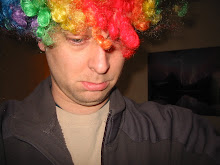 Doug Easterly has published “The Savage Swords of Athanor - Rules Supplement and Campaign Setting for Swords and Wizardry White Box.” It’s a 64 page, digest sized book, available in soft cover (as well as PDF) via Lulu that was released late last year.
Doug Easterly has published “The Savage Swords of Athanor - Rules Supplement and Campaign Setting for Swords and Wizardry White Box.” It’s a 64 page, digest sized book, available in soft cover (as well as PDF) via Lulu that was released late last year.As far as the book itself goes, the cover art is very simple but appealing. There is no interior art, although there are a couple of black and white maps. Personally, I don’t find this to be a detraction as the primary focus of the book is its utility. The text size and fonts are very readable, as are the tables. Owners of Brave Halfling’s WhiteBox box set will be glad to know that this supplement physically fits into its box nicely.
The book’s contents are laid out in a familiar fashion. Its sections follow and are named after the original OD&D books - being Men and Magic, Monsters and Treasure, and Underworld & Wilderness Adventures.
There are no dwarves, elves, or halflings in the Athanor setting. Instead, there are: humans (three races), Mal’ Akkan (seven foot tall, cacti-people), Alemanians (blue-skinned, human-sized arthropods), Throon (nomadic fungi-humanoids), and Earthmen - the latter being visitors to the world of Athanor from our time, arriving through wormholes or by technological or magical accident.
Character classes are broken down into Cleric, Fighting-man, Magic-User, and Rogue. Rogues are not a type of thief, but are actually untrained practitioners of magic. There’s a simple skill system based on the saving throw. Having a particular skill gives a character a bonus to the attempted action (any character can attempt any action.) Skills are chosen from two different sets - the Earthman class can choose from an additional set which includes such skills as “Scientist” and “Mechanic.”
Mutations are a part of the setting, which happen “as a result of exposure to the Clone Pits, Ancient technology, or irradiated ruin.” These aren’t as varied as say Mutant Future or Gamma World, but add more than just flavor to game play.
An interesting element is the existence of the Clone Pits of Zamora. Zamora is a large, domed, ancient city. There, Vog-Mur the Necromancer offers his services which allow players to duplicate someone or create a new, living body for them.
There are thirty two creatures in the section on Monsters and Treasure. Among these are a variety of dinosaurs and others more familiar to typical D&D settings such as dragons (or the Athanoran bat, which is essentially a stirge.) Various new technologies and relics are listed, including such heavies as “The Hand of Death” but also more familiar items like laser pistols. Fans of TSR’s S3 module will recognize the “needlers” here.
Physically, the land is covered in plains filled with lichen and fungus. The latter can compose forests ranging in heights up to twenty or thirty feet. The dying sun still reigns over a planet where most of the water has long since disappeared, and most of the cities now lie in ruin.
Deities are outlined, as are languages, and even food (commoners subsist mostly on the “meal beetle.”) The city-state of Zamora is described in some detail, including its twelve inns and taverns, its nobles, guilds and societies. A number of NPCs of Zamora are described, including the Overlord of Zamora, and the aforementioned Vog-Mur, among others.
Toward the end of the supplement can be found a list of twelve adventure seeds. The author explains in yet another section called “Planetary Romance Plots” that the setting is “all about the pulpy planetary romance action.” Here he includes a romance plot chart to roll on, and encourages one to loosely and somewhat humorously use the plot style of Edgar Rice Burroughs as a guide.
The included and keyed wilderness hex map, random encounter tables, NPCs, and suggested adventure seeds would make this a very easy to use sandbox setting requiring little initial adventure preparation. I really like what Easterly has done here - the setting’s various descriptions have the exact right amount of detail. One is glad for them, but still inspired to further make the place your own, and they allow your group to quickly get into a Swords and Sorcery / Science Fantasy campaign.
I highly recommend this to anyone looking to explore the genre in their game. At only $8 print and $2 as a PDF, it’s a bargain. Even if you’re just interested in it as a template of how a campaign setting should be put into print, you should check it out.
More information can be found at the Savage Swords of Athanor development blog.







2 comments:
This book had been on my list of rpg material to purchase for months, thanks for he added info about it.
I've had this book for a couple of months now and agree with your positive assessment of it!
Post a Comment